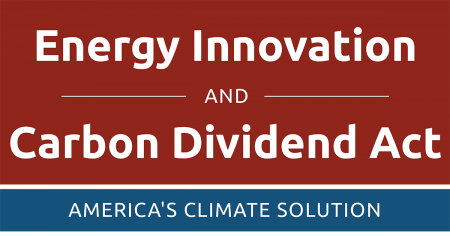April 11, 2019 – For my Canadian readers who still don’t understand the federal government’s policy on carbon pollution, I give you an explanation from a resident of Sitka, Alaska, describing the details of a proposed American piece of legislation, the Energy Innovation and Carbon Dividend Act.
Barbara Bingham described this forthcoming legislation in a presentation last week to members of the Sitka Chamber of Commerce stating:
“The policy puts a fee on the greenhouse gas emissions from fossil fuels like coal, oil, and gas. It starts out low and increases over time. This will drive down carbon pollution because energy companies, leading industries, and American consumers will move toward cleaner, cheaper options. The steadily rising carbon fee is applied to coal, oil, and gas in proportion to the CO2 output of the fuel. The fee is applied as far upstream as possible for domestic production, and at the ports for imports, utilizing existing measuring facilities.”
She goes on:
“The money collected from the carbon fee is allocated in equal shares every month to the American people to spend as they see fit. Program administrative costs are paid from the fees collected. The government does not keep any of the money from the carbon fee. Under this plan, about two-thirds of all households would break even or come out ahead considering the higher cost of living.”
Bingham could help Canada’s Minister of the Environment and Climate Change, Catherine McKenna, with this explanation because it appears so many Canadians do not understand what and how the federal government’s carbon pricing works.
In her explanation to the Chamber of Commerce, she points out that about one-third of the population will not benefit from the act. Who is this segment? States Bingham, “the affluent people with energy-rich lifestyles.”
Why?
“It’s not just the fuels that we’re using — it’s the energy and the carbon that goes into our products, the things that we use: Appliances, clothes, all of that stuff. The more of those things that you own in your life, the higher your carbon footprint. The simpler your life, the lower your carbon footprint.”
Bingham will be in Washington, D.C. in June along with four other Alaskans, to advocate for the Act on behalf of Alaska residents and 300 of the state’s businesses.
Here in Canada, the opposition to carbon pricing is led by four provincial leaders and the federal head of the Conservative Party. They collectively only refer to the first paragraph cited above but a Canadian version of it. They like the Republican opposition in the United States, ignore the second paragraph of explanation, describing the entire policy as a tax grab.
Bingham describes the end result of implementing this new Act in the United States stating “once we have this in place, it will drive innovation. There are so many things we haven’t thought about yet: Biofuels, hydrogen fuels, more efficient engines. There are ways to mitigate this, and it’s going to take some time, but the dividend will help a lot to overcome that.”
Canada’s federal carbon levy differs from what Bingham has described because it only applies to provincial and territorial jurisdictions that have not implemented their own form of carbon pricing. But in every other respect it works the same way, starting at $20 CDN per ton in 2019, and incrementally growing $10 per year until 2022 when it peaks at $50. The money collected from the federal levy will be returned to individuals and families in the four provinces where carbon pricing has been put in place because of no action on the part of these local governments to address the issue. It is expected that most Canadian households will get back more than the amount collected on their personal purchases of carbon-based fuels whether from gasoline and diesel, propane, or natural gas for heating and cooking. And it is the hope of the government that in paying for carbon consumption that Canadians will change their behaviour and seek lower-carbon alternatives in daily purchases.
If many Canadians don’t get the why and how of the levy on carbon in this country, then maybe this American citizen’s explanation will prove helpful. Her words could convince not only American citizens and legislators but also Canadians about the necessity to act on climate change through this type of market-driven policy.
















